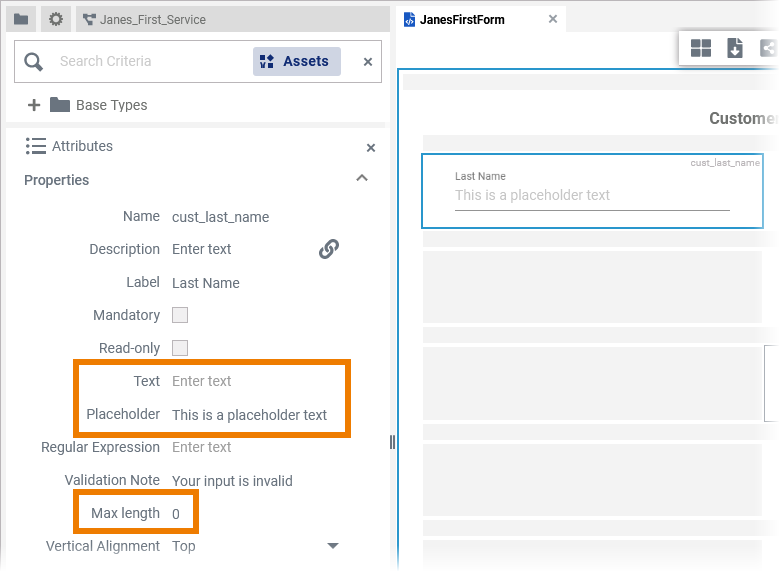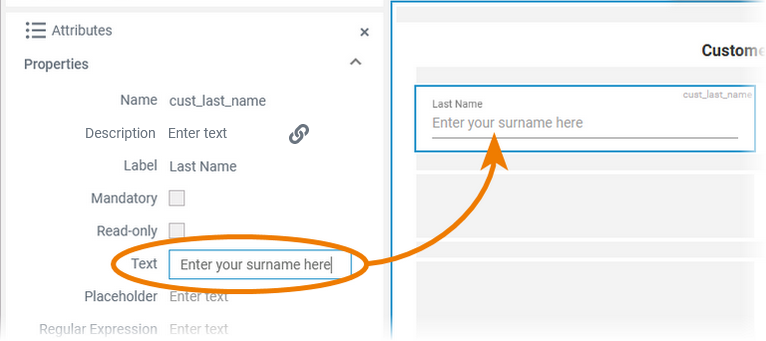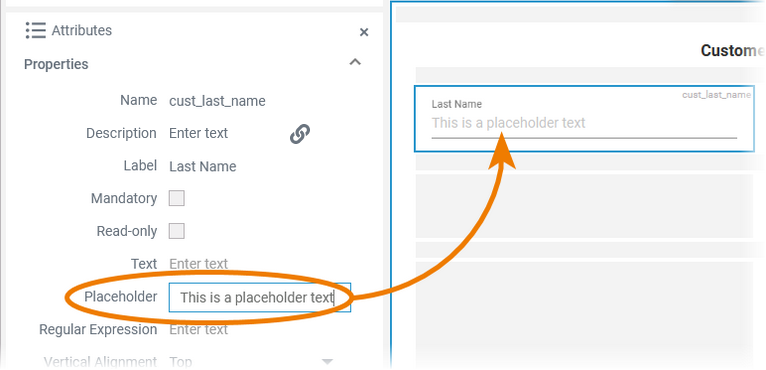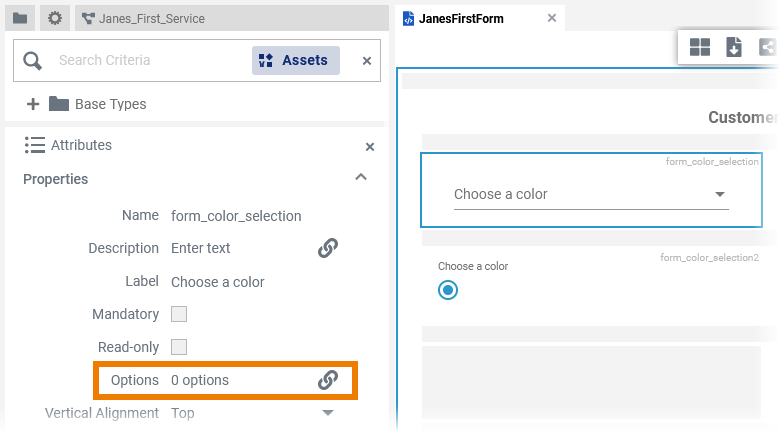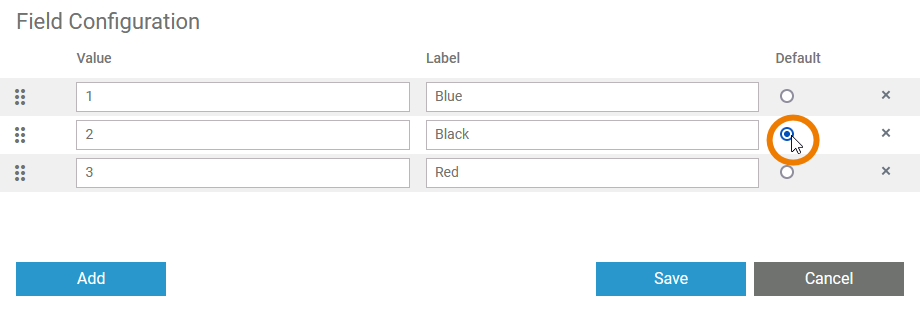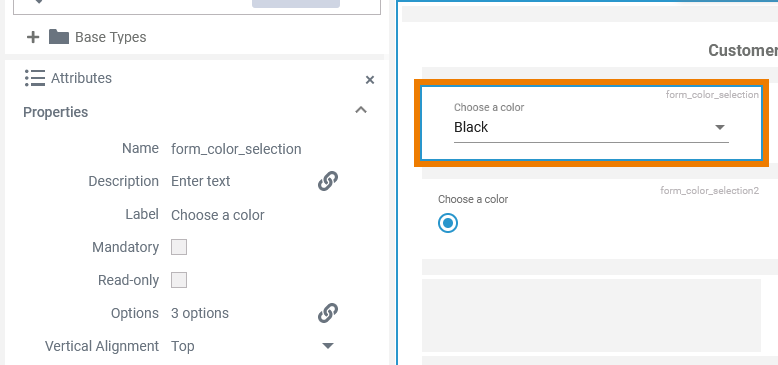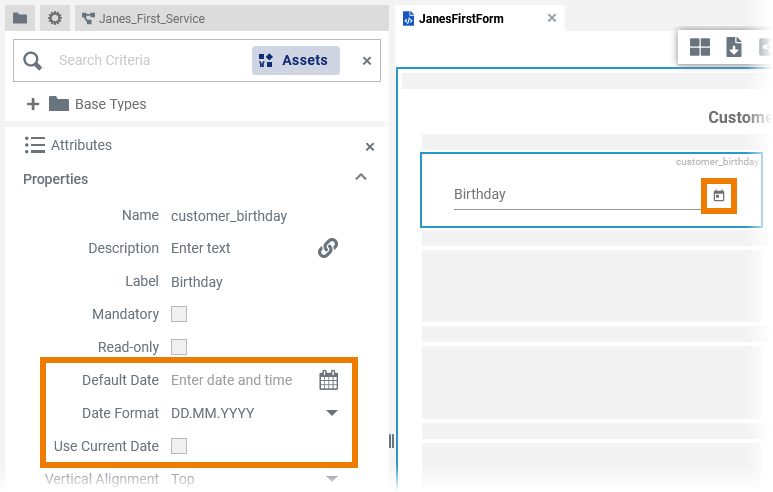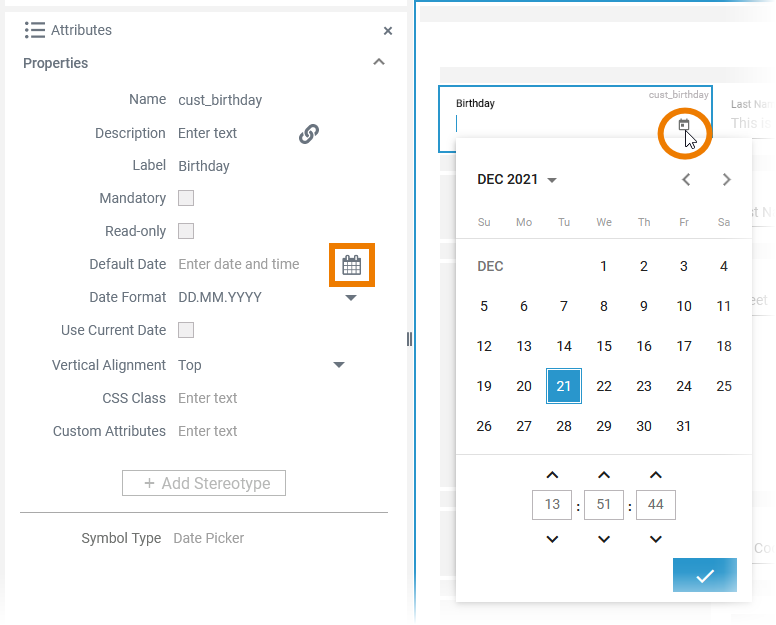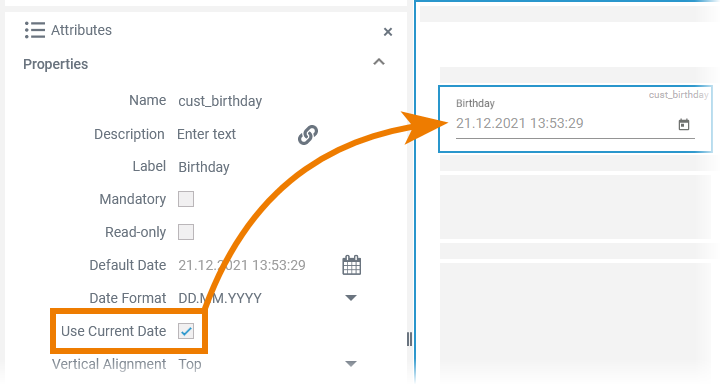- Created by Annegret Bernhardt, last modified on Jan 04, 2024
| Open the Attributes panel to configure a form element. The panel contains different settings for each element. For the different configuration options, see the individual element pages in chapter Supported Form Elements. |
| The form itself also has its own attributes that you can customize here. For further information refer to Attributes of a Form. |
| Note on Field Naming All form elements have the attribute:
Most form elements have the attribute:
There are two exceptions:
|
Simple_Form_Example
Defining Preset Values
For some form elements you can preset values:
Form_Default_Value_Example
Text Box and Text Area
| |
| TextContent added to attribute Text is shown in the element. If the user does not change the content of the field during form execution, the content of Text will be saved to the database. |
| PlaceholderThe content of this attribute is displayed in the element when attribute Text has not been filled. The placeholder is a sample value, it is not saved to the database. When a user overwrites the placeholder, it disappears and the user's input is saved to attribute Text. If content is added to both attributes Text and Placeholder, the content of Text is displayed in the element. |
| Max. LengthThe attribute Max. Length allows you to limit the number of characters that can be entered into the input field. The default value is 0. If the value is empty or 0, the length of the text that can be entered into the input field has no limit. |
For the element Text Box the attribute Validation Note is additionally available: | |
| Validation NoteIf a regex is set, the validation for an input field is executed when a button is pressed and the form is submitted. |
Select Field and Radio Button Group
| The elements Select Field and Radio Button Group contain the attribute:
The configuration of the options for a select field and a radio button group works in the same way. |
| If you click the icon Select the radio button in the Default column to preset this value as default in the element. |
| Example: The second value Black is preset as default value in the element. |
Date Picker
| The element Date Picker contains the three attributes:
|
| By default the date picker field is empty. You have two options to preset a date:
|
|
|
| Use the Date Format field to define the format, in which the date shall be displayed. You can choose between three different date formats:
|



